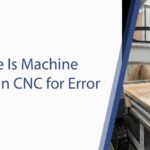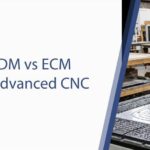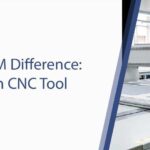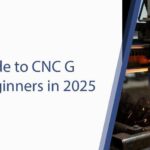3D Surface Mapping with Probe — The New Standard of Precision in Industry
In modern industrial manufacturing, 3D surface mapping with probe technology has become a cornerstone of precision and quality assurance. By enabling accurate, high-speed measurement of complex surfaces, it ensures that every part meets stringent performance standards.
From automotive and aerospace to medical devices and mold manufacturing, this technology provides manufacturers with a competitive edge — reducing waste, minimizing rework, and improving overall production efficiency. In an era driven by data and precision, probe-based 3D mapping is redefining how quality control is achieved.

Fundamentals of 3D Surface Mapping with Probe
Probe technology uses either contact or non-contact methods to collect surface data with exceptional precision. Contact probes physically touch the surface to measure micron-level variations, while non-contact probes, such as laser or optical systems, capture surface geometry through reflected light.
Once data is collected, advanced software converts it into a 3D digital model, visualizing every curve, texture, and micro-imperfection.
This allows engineers to assess:
- Surface curvature and roughness.
- Deformations or dimensional inconsistencies.
- Tolerance accuracy against design parameters.
The result is complete visibility of the component’s geometry, ensuring that even complex surfaces meet precise design and functionality requirements.
Industrial Benefits — Precision, Efficiency, and Time Savings
In industries where precision defines performance, probe-based mapping offers measurable advantages.
Precision and Repeatability
Every error in high-precision manufacturing directly affects product performance. 3D probe mapping delivers micron-level measurement accuracy, which is vital for aerospace components, engine parts, and medical implants. Repeatability ensures consistent quality across all production runs.
Versatility and Speed
Probe systems are compatible with metals, plastics, ceramics, and composites. Laser and optical probes quickly capture detailed data without interrupting the production process. This real-time capability accelerates throughput while maintaining measurement accuracy.
Time and Cost Savings
By detecting deviations early, probe systems prevent waste and costly rework. Real-time analytics enable immediate corrections, reducing downtime and ensuring a more efficient production workflow.
These combined advantages make probe technology a critical factor in maintaining competitiveness and profitability.
Reverse Engineering and Design Optimization
3D surface mapping with probe plays a crucial role in reverse engineering and design refinement. It allows manufacturers to digitally recreate existing parts or molds when original CAD data is missing.
Engineers can:
- Reconstruct accurate digital models of legacy or damaged parts.
- Compare physical prototypes with digital designs to detect mismatches.
- Accelerate redesign cycles and reduce prototyping time.
This capability streamlines design validation and helps transform physical data into actionable insights for product improvement.
Industrial Applications — Automotive, Aerospace, Medical, and Mold Manufacturing
Automotive Industry
In automotive production, probe systems ensure accurate surface mapping of engine blocks, chassis parts, and mold components. Early defect detection improves product reliability and ensures each part meets safety and quality standards.
Aerospace Industry
For aerospace applications, probe technology guarantees the precise measurement of wings, turbine blades, and engine parts — components where even the slightest deviation can affect aerodynamic performance. High-precision mapping enhances both safety and efficiency.
Medical Industry
In medical device manufacturing, precision is life-critical. Probe-based mapping ensures implants and prosthetics conform perfectly to the human body, improving patient outcomes and reducing the risk of rejection.
Mold Manufacturing
In the mold and die industries, 3D probe mapping ensures the flawless accuracy of mold cavities and surfaces. This minimizes imperfections, reduces waste, and maintains the high standards required for final product aesthetics.

The Future of Probe Mapping — AI, IoT, and Industry 4.0 Integration
The next generation of 3D surface mapping systems is being shaped by Artificial Intelligence (AI), Internet of Things (IoT), and robotic automation. AI algorithms analyze mapping data to identify micro-defects and predict deviations before they occur.
Meanwhile, IoT-connected probes feed live data into central manufacturing systems, enabling real-time process optimization. Together, these technologies transform probe mapping into a self-learning, automated quality control system — a key enabler of Industry 4.0.
H3: Conclusion — Radonix and the Future of Precision Measurement
Radonix leads the way in delivering advanced 3D surface mapping solutions that combine precision engineering with intelligent automation. By integrating probe technology into CNC systems, Radonix enables manufacturers to achieve:
- Micron-level accuracy across complex geometries.
- Real-time defect detection and adaptive correction.
- Faster production cycles with minimal waste.
In a world where precision defines success, Radonix probe systems empower industries to maintain quality, consistency, and efficiency — setting the new global standard for high-precision manufacturing.
Contact Us:
- E-Mail: info@radonix.com
- Phone: +90 (553) 920 5500











